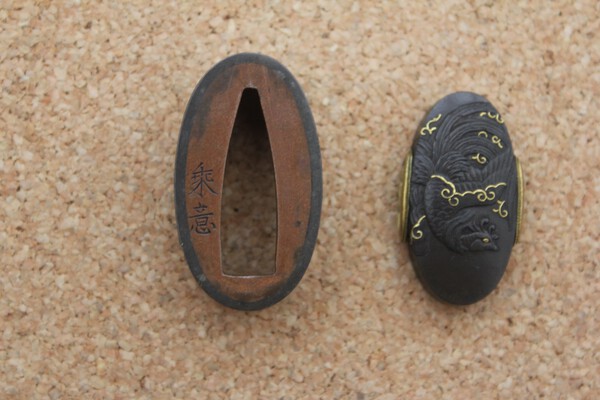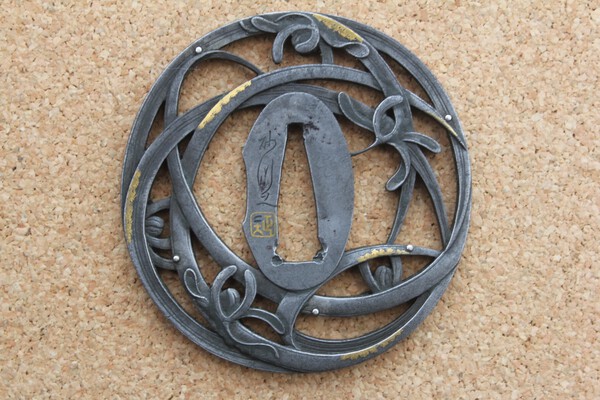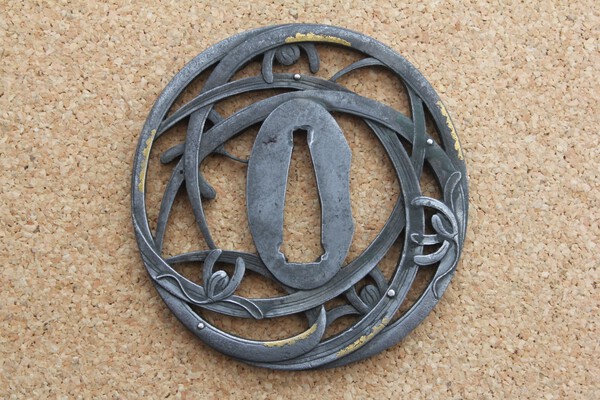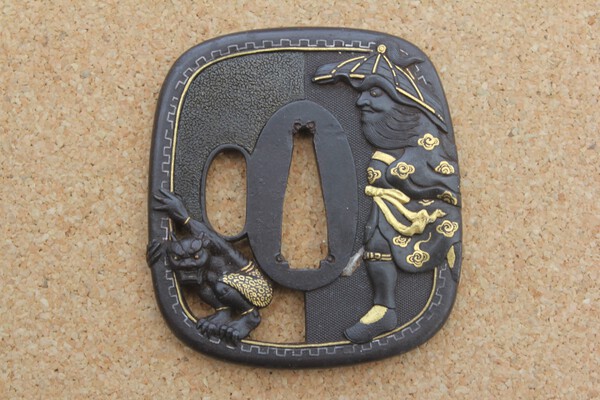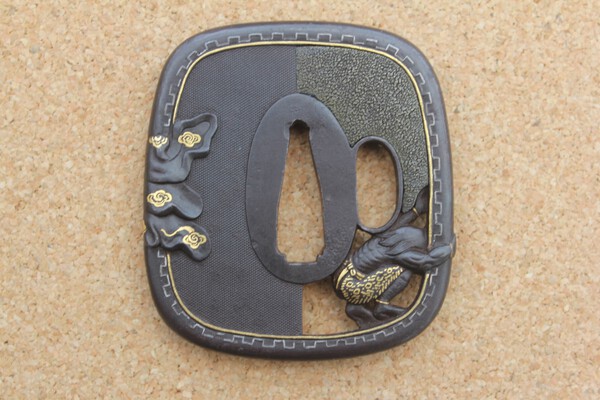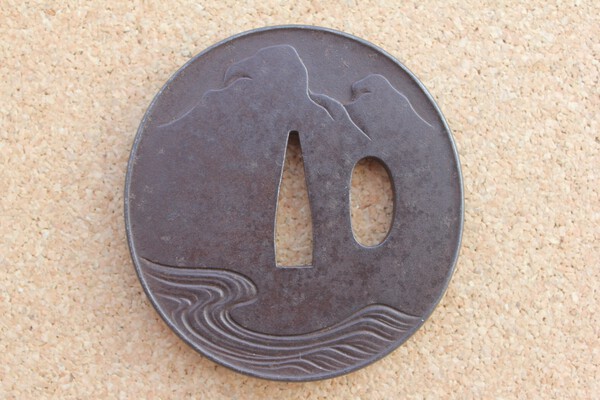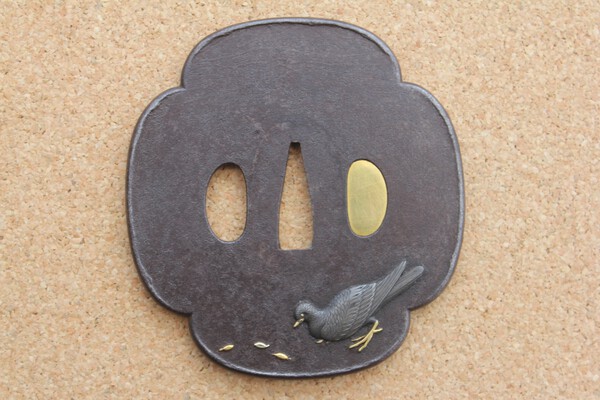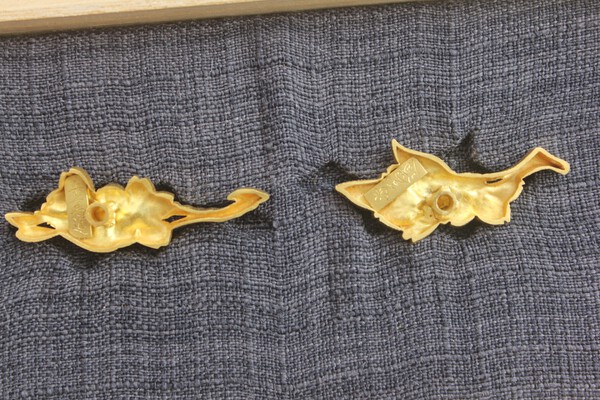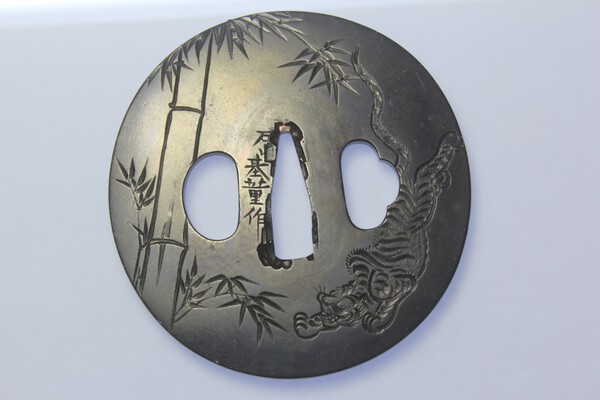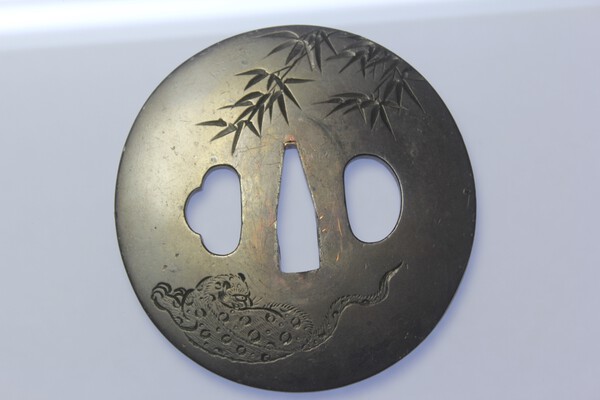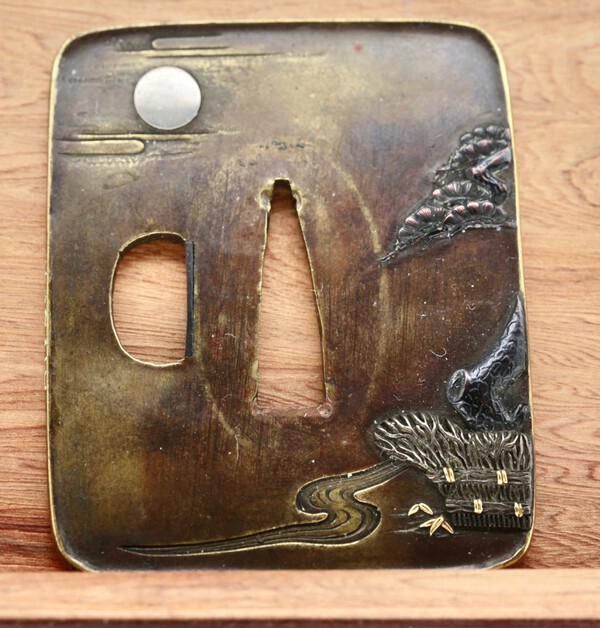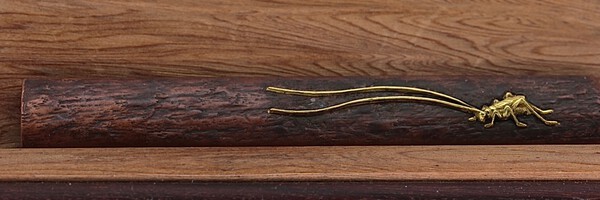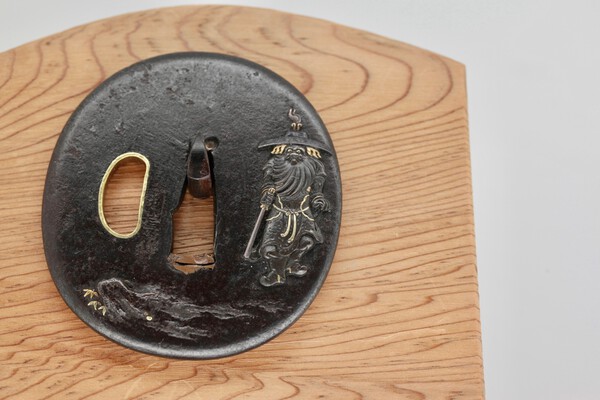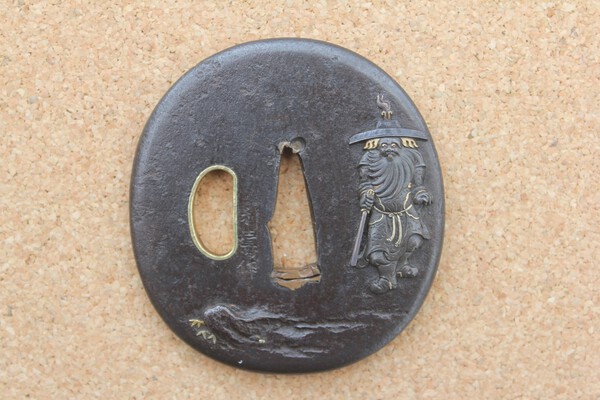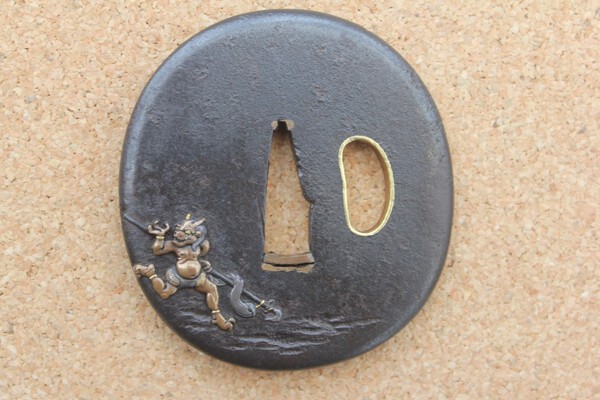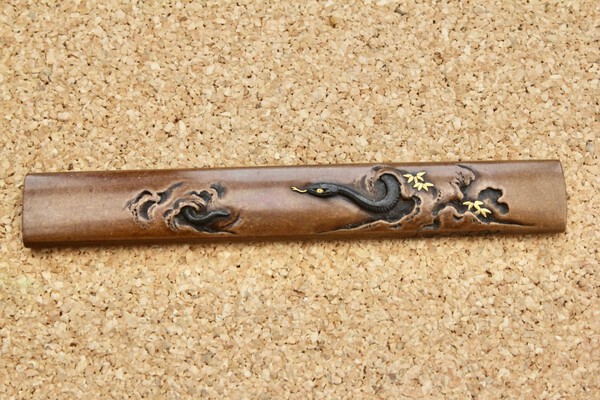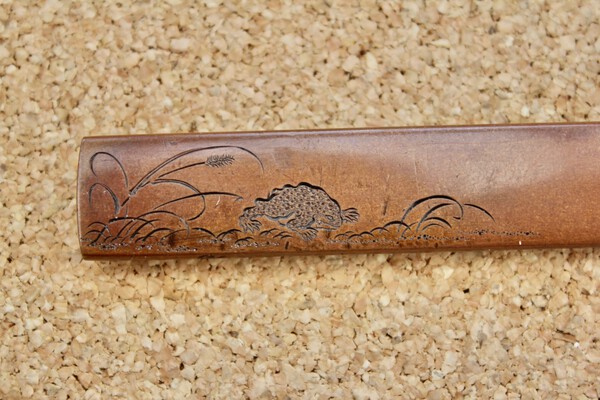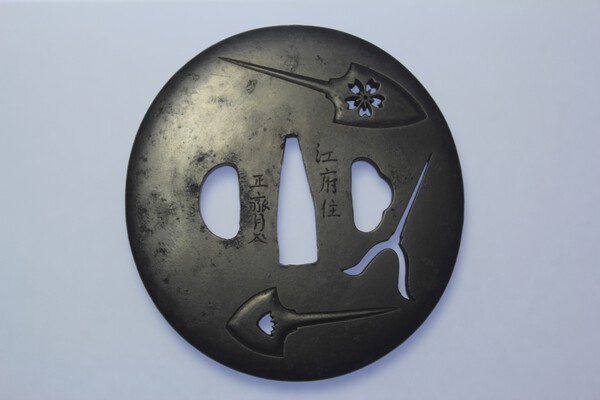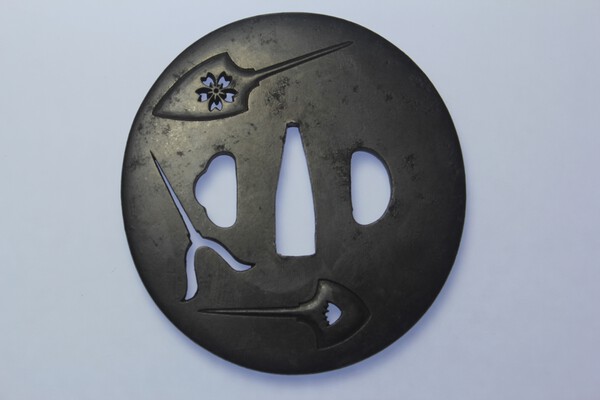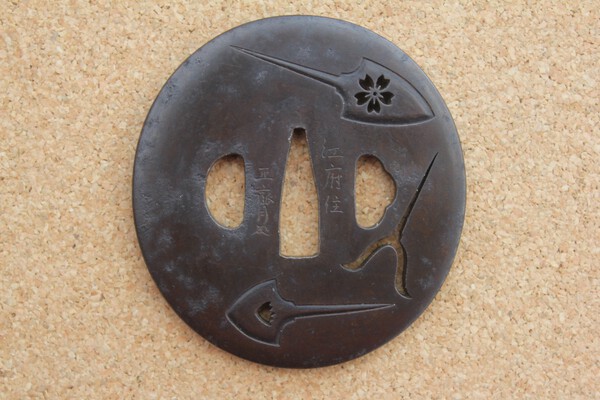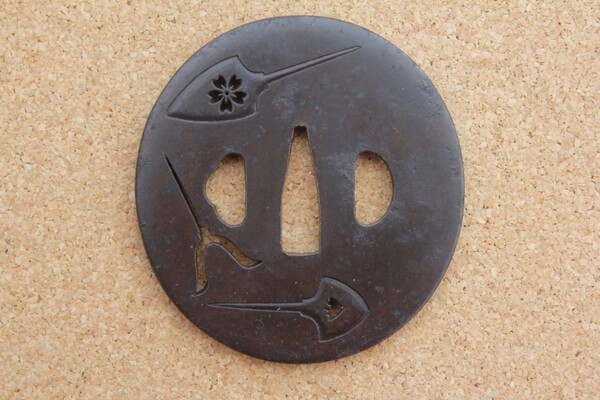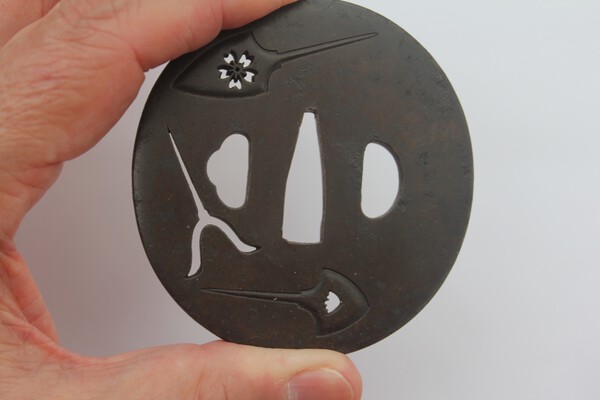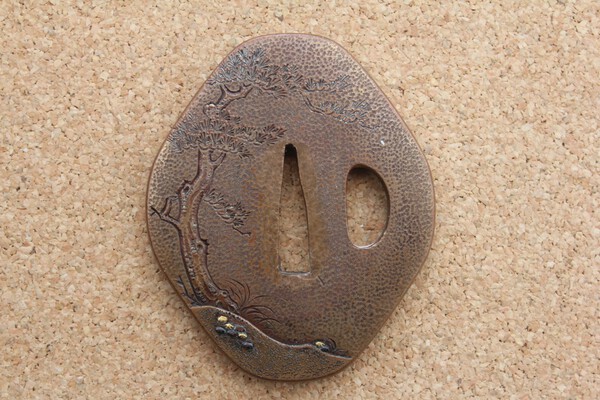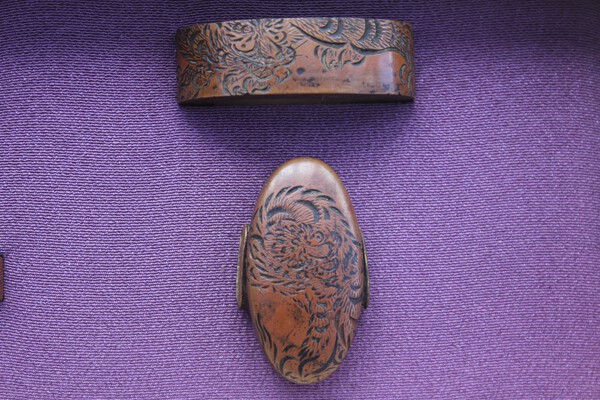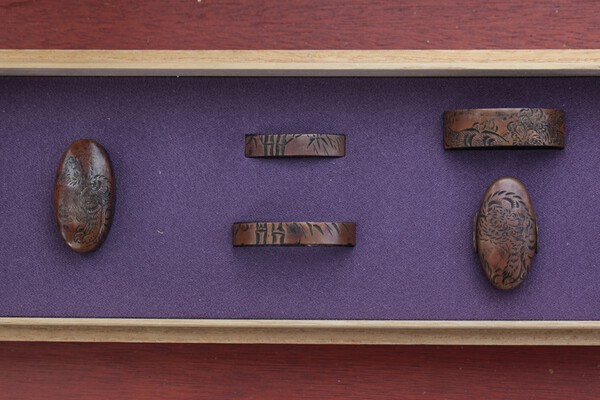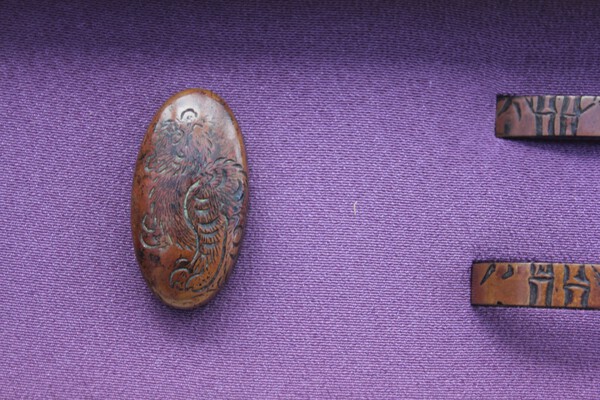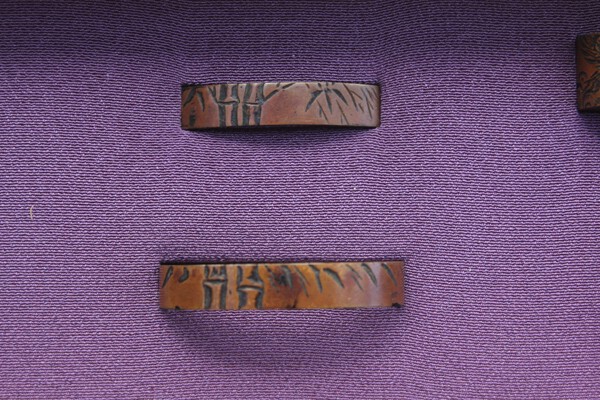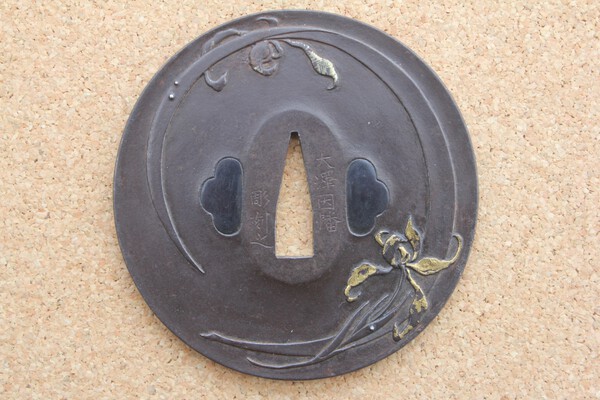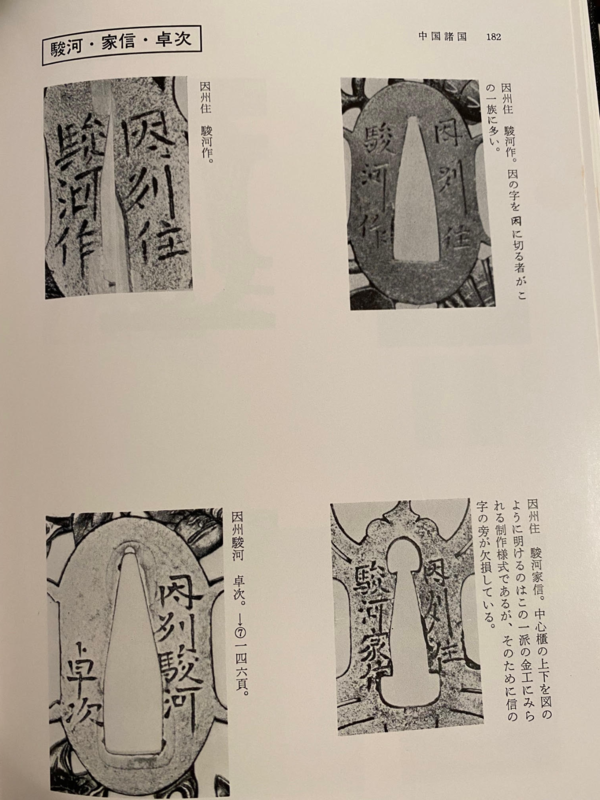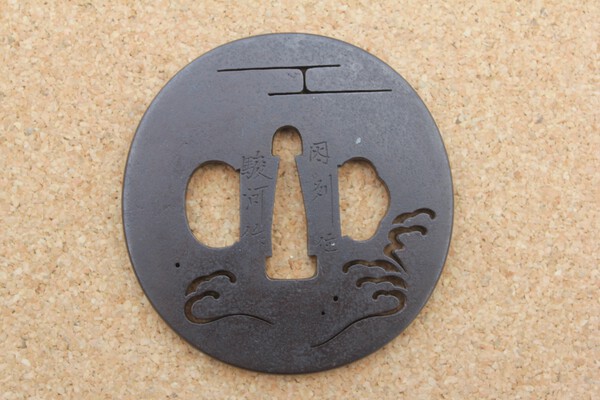-
Posts
614 -
Joined
-
Last visited
-
Days Won
25
Content Type
Profiles
Forums
Events
Store
Downloads
Gallery
Everything posted by Bob M.
-
Item No. 273 Fuchi-gashira in shibuichi with gold detailing. Subject of flying ho-o bird with a kiri branch , signed Joi. Carved and inlaid with a fine ishime ground. Painstaking detailing appears on all the feathers of the bird with delicate gold inlays. Looking deceptively simple ,once again , workmanship that only fully reveals itself in hand and under magnification . Provenence - Ex T. B. Blow collection Ex T. B. Kitson collection
-
Item No. 272 Silvered iron with gold and silver 7.12 cm x 6.91 cm x 0.41 cm Subject of flowers and leaves by Sunagawa Masayoshi , 3rd generation Sunagawa school , early 19th cent. Is there a gardener / botanist out there who can identify the subject of this piece ? As far as I can see it could be an Orchid or possibly an Iris or a Lily. There is a lot of dirt obscuring detail on this - I think a good soaking in a detergent solution is called for , see if any of the grime will lift.
-
Item No. 271 Tsuba in iron with gold and silver/shibuichi 7.08 cm x 6.45 cm x 0.50 cm Subject of Shoki and Oni unsigned , design after Toshinaga. A determined looking Shoki in pursuit of a realistic, powerfully muscled oni . Good detailing throughout with a micro nanako ground to half of the tsuba - not easy to do on iron. Although without signature , papers or provenance , one of my favourite pieces , acquired nearly twenty years ago off ebay , before the Chinese fakes started to appear . Difficult to assess age , but possibly about 150 years old . Has been mounted at least once.
-
Item No. 270 Iron tsuba with ( single ) gold detail 7.00 cm x 6.68 cm x 0.43 cm Subject of a horse , its head raised towards a stream and hills in the distance as depicted on the rear. Mito School , 19th cent. , by Hagiya Katsuhira & kao Superior workmanship , shown off in the hand , far better than in photographs , with many subtle, raised details to give a three dimensional effect . In fact the horse appears to be looking back towards the viewer , just before galloping away. Provenence- W. W. Winkworth collection Edward Wrangham collection
-
Item No. 269 Mokkogata Tsuba in Iron with gold , shibuichi and silver 8.94 cm x 8.36 cm x 0.35 cm Subject of pigeons feeding . Unsigned , attributed to Kawarabayashui Hidekuni 1825 - 1891 ( adopted son of Hideoki ). Unusual theme from an artist of the famed Otsuki school - nicely portrayed - those pigeons have Attitude . As usual , the piece looks far better in the hand with carefully worked details becoming apparent. Haynes ref. H01054.0 NBTHK papered
- 954 replies
-
- 12
-

-
Hi Barry , Thanks for your comments and support . There are another four Ford pieces ( tsuba ) to go over the coming months . When the thread is finished , we can then start on groupings of fittings by maker , subject , age , etc etc . Please let me know what you would like to see ( if anything ) - this should be better for making comparisons / study . Regards
-
Item No. 268 Pair of menuki in solid gold. Subject of Sakura blossom , modern made by Ford Hallam about 12 years ago. The subject and quality speaks for itself .
-
Item No. 267 Tsuba in shakudo or dark shibuichi 7.71 cm x 7.50 cm x 0.42 cm Theme of tigers and bamboo by Ishiyama Mototada , Kyoto 1669 - 1734 . ( Haynes 05940.0 ) Son of a court noble , Ishiyama Motoaki , he inherited the title after his father's death and often stated this on his work . He was a student of Yokoya and Goto schools . Nice , early ( ish ) Katakiri work . Scratches on the reverse around the seppa dai are what happens when the sender ignores a request to separately wrap the tsuba and not send it in its box. NBTHK papered.
-
As previously mentioned , this is the first new posting intended to compliment the existing ' A series of fittings ( or how not to build a collection )' thread. I will start as I mean to carry on with - Item No. 266 A brass ( sentoku ) tsuba with gold 7.38 cm x 6.82 cm x 0.41 cm Subject of monkeys , signed and inscribed ' Hizen Yagami ju Mitsuhiro saku , motte sentoku kin kore wo tsukuru ' late 18th/early 19th cents. A not uncommon subject , perhaps a little better carved than most.
-
Re. This Thread. There are a total of 265 items posted to this thread and I have decided , after consultation , to stop posting any further pieces on it . ( Some items have a number and suffix , rather than their own unique number ). The thread itself is becoming unwieldy and because of being pinned , although available as a reference , it is somewhat hidden and it is not always apparent if a new item or comment has been posted . There are approx. forty more tosogu to be shown and they will appear under a new thread with the rather catchy name of ' A Series of Fittings Part II '. This will also be pinned upon completion , probably sometime next year. I will start posting these in the next few days. The fittings comprise of a number of personal favourites together with a mixture of types , schools and ages and a few more possibly familiar pieces. Could I please encourage everyone to comment or criticise - it really helps to keep the thread alive . Thanks
-
Re Item No. 259 - George Miller has kindly been doing some digging regarding this piece and has sent his conclusions below. I must admit that I never thought that the young Joi could, ( still not proven , however ) be responsible for this - I guess it would really need to go to shinsa for their views. ' Just a quick note on your Item No. 259 signed Nagaharu. The 3rd Generation Koichi & Katsuo School Master (Named Yazaemon - Haynes 06426) used a different kanji for “haru” than the one on your tsuba. Your tsuba uses 春 instead of 治 (which is what 3rd Gen Katsuo used). Haynes has three entries for guys who used the kanji on your tsuba H06427, H06428 & H06429. The first guy (H06427) is from the Haruta school and does not usually work in the style of your tsuba. The second guy (H06428) worked in the style of Sugiura Joi, but Haynes notes that the relationship to Joi is unclear (and can’t provide any more information). Joi is also known to have used the name Nagaharu in the same kanji as your tsuba early in his career (later he used Nagaharu in “seal script” and signed Joi). The third guy (H06429) is a Shimizu Jingo guy so also not usually working in the style of your tsuba. Therefore, I think your tsuba is either an early Joi (when he signed Nagaharu) or H06428 (who may actually just be early Joi) or someone trying to look like early Joi. Of course, if you ask people, they will say that this tsuba, while very nice, is not to the level of Joi; however, Joi had to start somewhere (I don’t believe that his first few attempts were all perfect)… ' Thanks again , George.
-
Item No. 259 Tsuba in Sentoku wth silver , gold , shakudo and shibuichi 6.90 cm x 5.50 cm x 0.26 cm Subject of autumnal scenes under a full moon . Signed Nagaharu - 3rd Generation Koichi & Katsuo school ( Kaga ) late 17th cent. The tsuba is in good condition for its age of nearly 350 years. An interesting small ( wakizashi sized ) tsuba with an image of a stream running past bundles of firewood and an old pine tree . The scene continues on the other side with a few more bamboo leaves and two flying geese . The whole panorama is lit by a full moon shining through a gap in the clouds . A quiet, contemplative , almost melancholic piece depicting the changing of the seasons .
-
Item No. 258 Copper Kozuka with gold and shibuichi Subject of a cricket signed Yasuchika on one edge. The Kozuka is carved with a background imitating a wooden log , the cricket in gold with a full moon rising behind grasses on the reverse.
-
Item No. 257 Iron Tsuba with shibuichi , shakudo , silver , gold and copper 6.90 cm x 6.43 cm x 0.46 cm Subject of Shoki and oni , signed Toshinaga saku - Nara school 18th cent. A wakizashi sized tsuba with popular theme of the demon queller and his adversary . Shoki is striding purposely forward whilst on the reverse a fleeing oni is stealing a banner. Both figures and the banner are beautifully detailed and reward a close look . Provenence - ex Edward Wrangham collection.
-
Item No. 256 Kozuka in copper with shakudo and gold Subject of a snake winding in and out of a hole in a rock with a toad on the reverse, signed Haruaki Hogen with kao. 19th cent. Superbly detailed piece with miniature , delicate kebori work of the toad surrounded by grasses . Signature on edge. Could this have something to do with a Sansukumi ? There are normally three characters though, and we are missing the slug. Another piece showing the skill and attention to detail that is the hallmark of Haruaki Hogen and his school.
-
Hi Mauro, Thanks for your interest and message . This is one of a number of fittings that arrived into my collection without any background information . I asked George Miller if he would kindly take a quick look at some of these and my posting is based on information he has supplied , always assuming that I have interpreted it correctly . It seems that the signature on this piece is a bit of a puzzle . My understanding is that it is signed Kofu ju on the right ( agreed ) and on the left ' Seisai ' or ' Shosai ' with kao/kakihan on the left. Seisai is known as Masanari ( Haynes 04295 ) however several kao shown for him , although similar , do not match. Haynes refers to Wakayama , where the signature and kao for Masanari do match however , both Haynes and Wakayama say that Masanori always signed with the place that he worked , but none of these locations are Kofu. Shosai , the other possibility , is from the Takigawa family and worked in Kofu in the first half of the 19th Cent., but it has not been possible to find any references to his mei. This leads us to the puzzle that the mei and kao match Masanari but the location does not , however the location matches Shosai . The style of work possibly also points to a later piece rather than an earlier ( 1700's ) one which is when Masanari was extant. I guess that one could choose either way - it would be interesting to see what a shinsa would make of it . Thanks again for spending your time on this , it is great to have some feedback. Best
-
Item No. 255 Iron Tsuba 7.75 cm x 7.33 cm x 0.50 cm Subject of three yanone ( arrow heads ) signed Shosai ( first half 19th cent. ) Beautifully made piece with smooth , tactile finish and nicely depicted arrow heads. Possibly alludes to the ' Three Arrows Lesson ' , still taught today to elementary school children in Japan. The lesson shows that one arrow may easily be snapped , but bundle three together and they are far more difficult to break - in other words working together as a team is much stronger than working as an individual . Again , thanks are due to George Miller for his assistance.
-
Hi Mauro, Thanks for that - I have edited the posting . Regards
-
Item No. 254 Tsuba in copper with gold, shibuichi, shakudo and silver 7.00 cm x 5.82 cm x 0.50 cm Subject of thatched hut and sparrows signed Masayoshi . Can anyone attribute this to a school ? I wondered if the tree on the reverse pointed towards Hamano ? Irrespective , a nicely produced piece, possibly dating back to the early 19th cent. A lot of fine detailing and engraving on show.
-
Second of the fittings featuring tigers ! Item No. 253 Set of copper fittings Theme of tigers and bamboo signed Yurakusai Sekibun - 19th cent. Set comprises fuchi-kashira , kuchigane , uragaware and kojiri , engraved in katakiri and kebori . In bespoke fitted box. Bought at auction some nine years ago. NBTHK Tokubetsu Hozon.
-
Item No. 252 Iron Tsuba with gold and silver inlay 8.40 cm x 8.30 cm x 0.39 cm Subject of Iris ? ( unlikely ), Lily ?, Orchid ? Any botanists out there ? Signed Osawa Inaba chokoku kore , apparently the signature of Osawa Hokyo who was active in the latter part of the 18th cent. In very good condition for a tsuba the best part of 250 years old . Deep lustrous dark brown patina with the inlay virtually intact. One of my favourite themes , depictions of stately flowers and leaves .
-
Re Item No. 251 George Miller has been able to find the following - Suruga was used by later members of the Haruta family school after they had moved to the Suruga province. They were retainers of the Ikeda Daimyo. The third master is said to have only signed using Suruga. Haynes 09041 , also Wakayama has several mei that match this one. Thanks , George. Also Silhouette view as promised.
-
Item No. 251 Iron Tsuba 7.10 cm x 6.90 cm x 0.45 cm Subject of waves and stylised clouds. Inshu school, signed Inshu ju Suruga saku ,and dates to the 19th cent. An old but unused tsuba from possibly 150 - 200 years ago. I cannot find any info. on the Inshu school - is there any information in Haynes of Wakayama ? Great piercing - I will try to upload better silhouette pictures in the next day or so. Quite unusual to see a tsuba like this awaiting its first blade.




